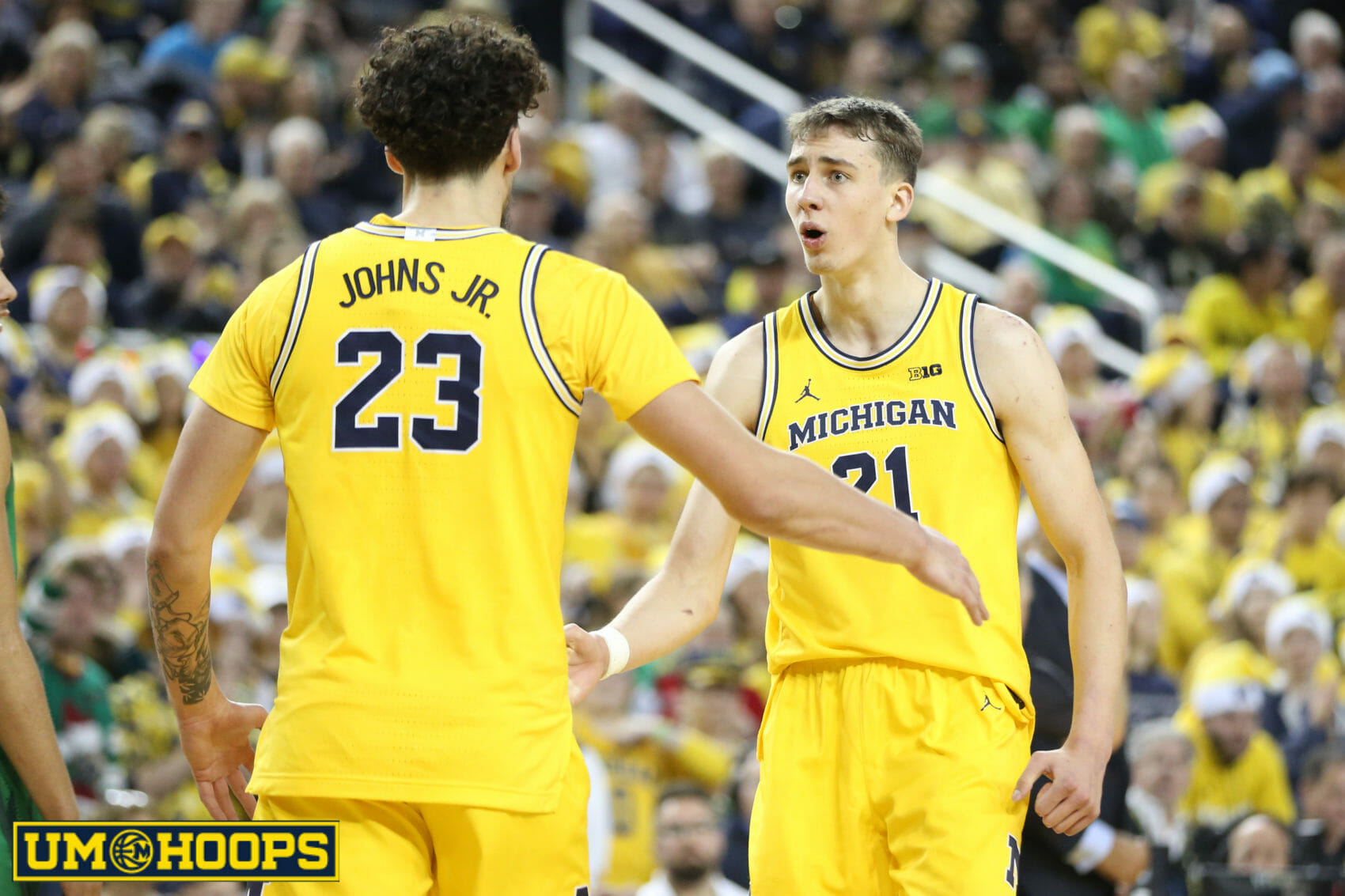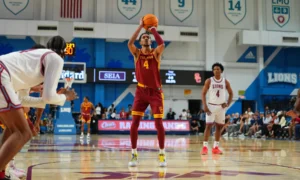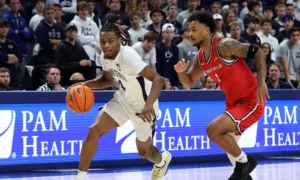Welcome to offseason storylines, a look into some of the biggest storylines surrounding the 2020-21 Michigan Wolverines. Today we open the series with a look at Michigan’s frontcourt and the need to develop a small-ball five.
Michigan welcomes top-40 center Hunter Dickinson to Ann Arbor this fall. Dickinson is one of the top incoming freshmen in the Big Ten and the best post-up scorer that the Wolverines have recruited in years. His arrival in conjuncture with Austin Davis’ return portends a definitive shift toward interior offense under Juwan Howard.
In a conference like the Big Ten, where arguably half of the league’s best players in 2019-20 were centers, that shift makes sense. Traditional back-to-the-basket post players are no longer valued in the NBA, but they are a valuable resource in college basketball. There are enough 7-footers for every NBA team to stash one on their roster, but most colleges can’t recruit a 7-foot-1 center with touch around the basket. The ones that can create a talent gap that leads to effective post-up offense, creates an offensive rebounding advantage and forces double teams. Schools like Michigan State, Wisconsin, Purdue and Kansas are just a few that leverage this strategy year after year.
While the shift toward interior offense makes sense, the Wolverines’ 2020-21 roster comes with a reminder that the shift can’t happen too quickly. Building around Hunter Dickinson will be part of Michigan’s 2020-21 plan, most likely the primary plan, but Juwan Howard’s team could be vulnerable if it is the only plan. No one is sure if or when the Wolverines will develop a small-ball game, but doing so will help Howard’s second team reach their ceiling on both ends of the court.
Join the UM Hoops Community
Join the only community dedicated to Michigan basketball
Get ad-free articles, recruiting, advanced stats, member-only discussion, and the most complete Michigan hoops analysis anywhere.
Already a member? Log In









